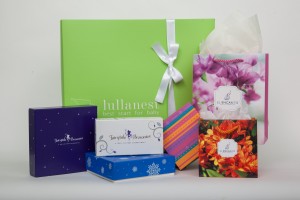To market your product you must zero in on delivering customer value. This is the behavior and the psychological processes that consumers go through in recognizing needs, finding ways to solve these needs, and making purchase decisions.
The idea behind marketing is that your business will create something of value to your customers who, in turn, are willing to pay enough to make the endeavor worthwhile considering opportunity costs. Perceived value can be created in a number of unique ways; through the sense of smell, touch, color, and music.
Customer’s senses are being overloaded with stimulation the second they make contact with your business. From wall colors to aromas to bright lighting, they are being bombarded with sensory overload from the very beginning.
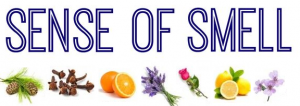
Smell is a chemical sense that is tied to the emotional center of the brain.
It is a very powerful sense; it can make us salivate, change our heart rate, attract us to another individual or stir our memories to the pleasurable, or not so pleasurable, times in our lives.
Smell can also make us buy.
“Smell has a greater impact on purchasing than everything else combined,” says Alan Hirsch, neurological director of the Smell & Taste Treatment & Research Foundation in Chicago. “If something smells good, the product is perceived as good.”
Scents and emotions they draw from consumers:
- Talcum powder: Consumers feel safe and secure.
- Peppermint and citrus: Consumers are more alert.
- Lavender and vanilla: Relaxes consumers.
- Barbeque smoke: Consumers perceive the room to be smaller.
- Apples and cucumber: Consumers perceive the room to be bigger.
- Leather and cedar: This scent is used when consumers are viewing luxurious and high-end home décor.
- Fresh baked goods: This scent is used when consumers are house hunting.
- Floral: Consumers are more likely to browse longer and spend more.

The sense of touch adds further clarification to customer’s sight. During any sale or negotiation, often business men and women shake the hand of their client. A warm touch makes clients feel safe and trusting, especially during a high profile purchase like a car or house.
From retail stores to restaurants, the sense of touch makes a world of difference:
- Weight: Studies conducted by Harvard, Yale and M.I.T. found that interviewers viewing resumes on a heavier paper were more likely to assess a job candidate as better qualified than interviewers viewing the same resume on a lighter paper.
- Texture: Those handling rough jigsaw puzzles pieces were more likely to view social interactions as harsh as those handling smooth jigsaw pieces.
- Hardness: Candidates sitting in a soft chair were less likely to try to negotiate price than those seated in firm chairs.

A few strong examples of how stores use the sense of touch to manipulate the mind of their buyers:
- Apple stores leave the lids of notebook computers partially open 70% on the counters. This entices the customer to explore the product more, but they are forced to touch the product before doing so.
- Restaurant waiters touch patrons to greet them. This gives the waiter a sense of approachability to their customers, which leads to high gratuity.
Do you feel calm when surrounded by green fields and blue skies? Or perhaps feel a sense of urgency when staring at a bright red “25% off” promotional sign?
Color has been known to have a powerful psychological impact on people’s behavior and decisions, and this knowledge has been harnessed all too well by designers and marketers alike. Color can often be the sole reason someone purchases a product, where 93% of buyers focus on visual appearance and almost 85% claim color to be their primary reason for purchase.
Colors & shopper types:
- Impulse buyers: Red, orange, black, and royal blue.
- Smart, budget buyers: Teal, light blue, navy blue, and pink.
- Conformists: Light blue, rose, and pink.
Colors & taste:
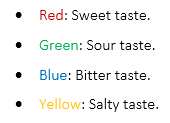
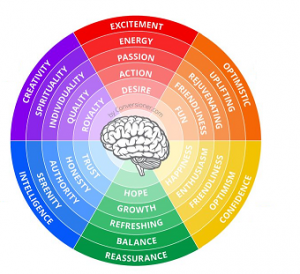
“Researchers say that music affects your heartbeat, brainwaves and triggers the release of dopamine that influences your mood.” states Alternative Finder’s Kate Stephens.
- Classical music: Increases quality sensation; perfect for tea houses, wine cellars, and spas.
- Slow music: Invites customers to stay in the store longer, which increases the amount of money they spend. Ideal for supermarkets, department stores, and bookstores.
- Fast tempo music: Makes consumers move quickly. Most commonly played in fast food restaurants; customers eat faster and leave earlier.
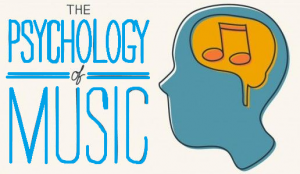
Morgan Chaney’s representatives are well trained and eager to help you take the next step to delivering quality customer value.
Research states the importance of implementing all of consumer’s senses into your marketing plan, but it’s proven that visual perception influences our buyer’s decisions making the most.
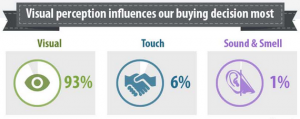
Take the visual aspect of customer value to the next level with custom printed packaging.
Whether you’re interested in designing custom bags or custom boxes; the design, color, and touch of your packaging will reflect your business’s image. This is especially important as customers leave your store and become a walking advertisement.
Visit www.morganchaney.com to explore endless amounts of custom print packaging.
